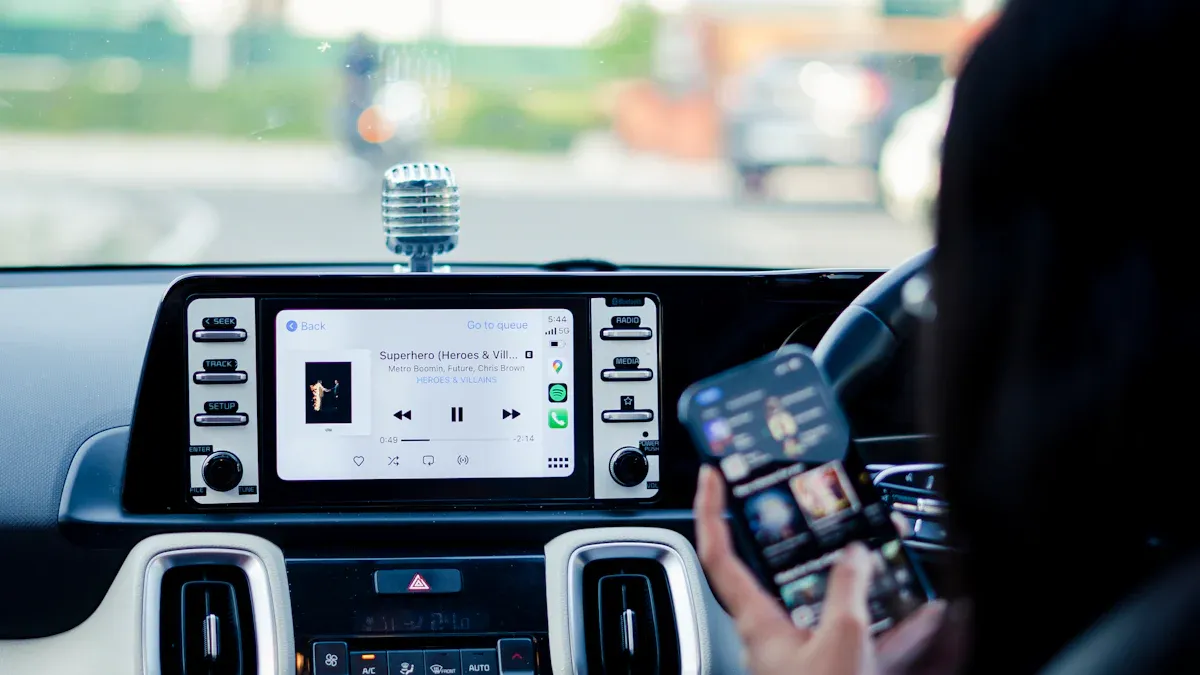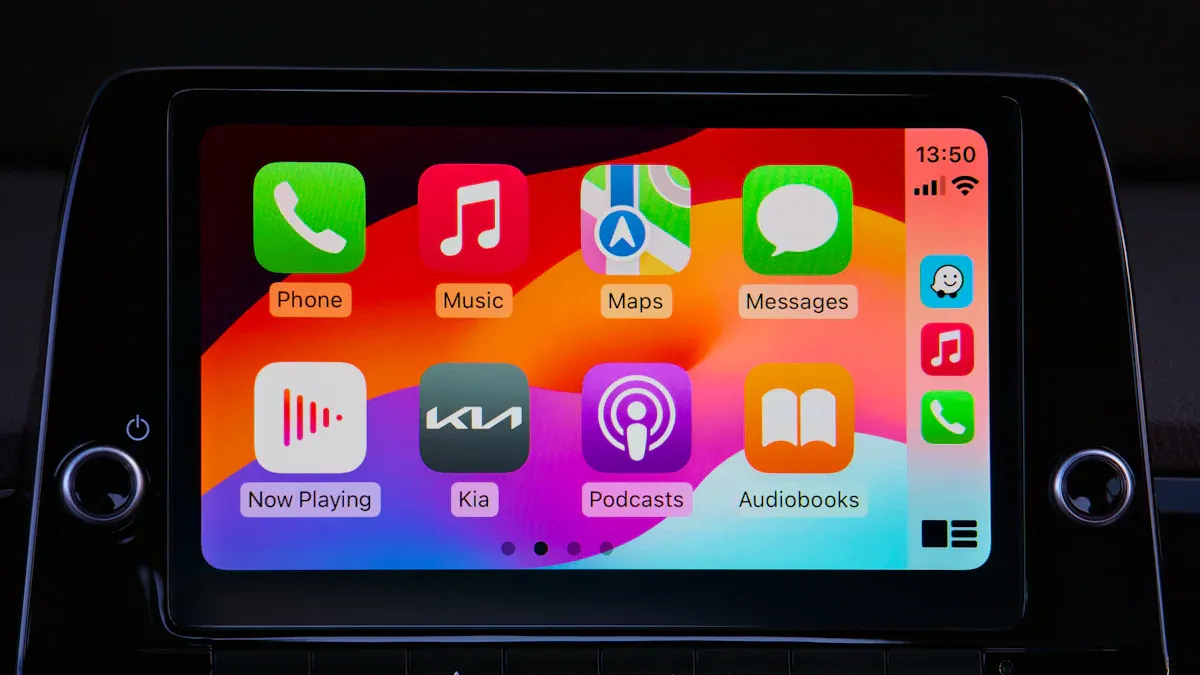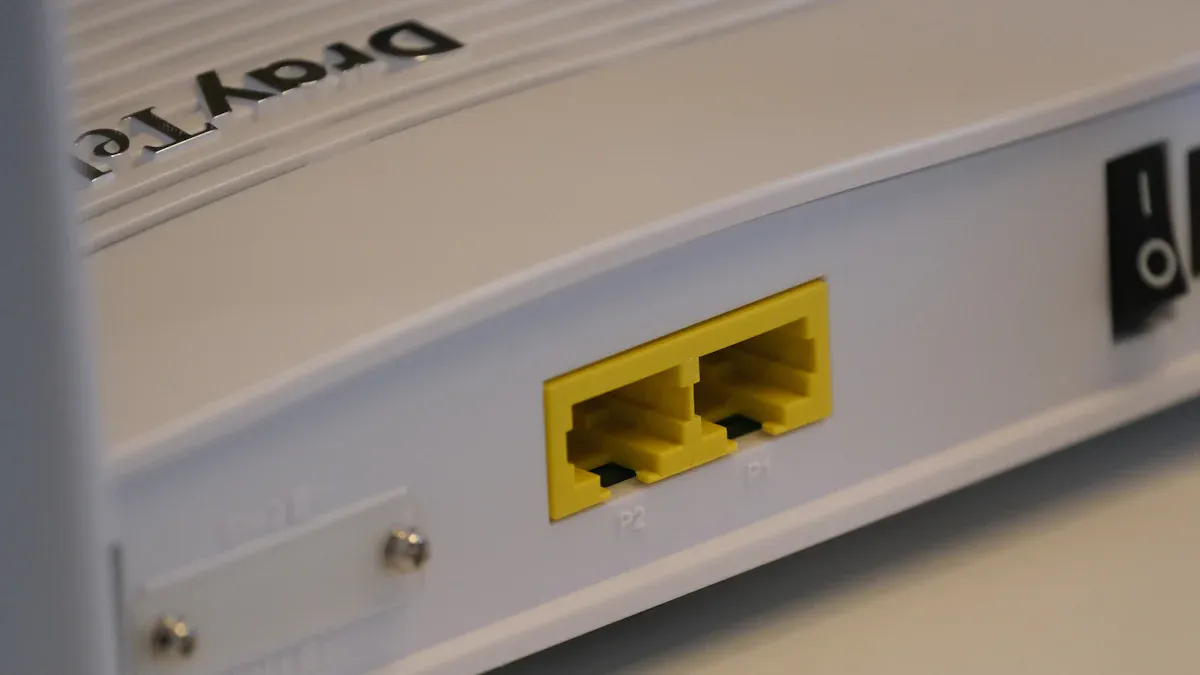
Imagine cruising down the highway while streaming your favorite playlist, navigating with real-time traffic updates, or keeping passengers entertained with online games. Reliable wi-fi in your car makes all this possible, transforming your vehicle into a hub of connectivity and convenience. With the rise of autonomous vehicles and 5G technology, in-car Wi-Fi systems now offer faster speeds and advanced features like infotainment and remote control.
However, choosing the right car internet router can feel overwhelming. The market offers a wide range of options, each with unique features and price points. Picking the wrong one could mean poor performance or wasted money. That’s why understanding key factors like compatibility, performance, and security is essential. A well-informed choice ensures you get the most out of your investment while staying connected on the go.
Understanding Your Needs for a Car Internet Router
Choosing the right car internet router starts with understanding your specific needs. Whether you’re streaming movies, navigating with real-time maps, or keeping passengers entertained, knowing how you’ll use the internet in your car is key.
Internet Usage and Activities
Number of devices to connect
Think about how many devices you’ll connect to your car’s wi-fi. Are you just using it for your phone, or do you have passengers with laptops, tablets, or gaming consoles? A router with higher bandwidth can handle multiple devices without slowing down. This is especially important for families or rideshare drivers who need reliable connectivity for everyone on board.
Types of activities (e.g., streaming, browsing, gaming)
Your internet activities also matter. Streaming HD videos or playing online games requires a router with fast speeds and low latency. On the other hand, if you’re just browsing or checking emails, a basic router might suffice. With the rise of 5G technology, you can now enjoy seamless streaming and gaming experiences, even on the go.
Compatibility with Your Vehicle
Built-in systems vs. external routers
Some cars come with built-in wi-fi systems, but external routers often offer more flexibility. If your car lacks built-in connectivity, an external router can be a great solution. It’s portable and easy to upgrade when new technology becomes available.
Power source options (e.g., USB, 12V socket, battery-powered)
Consider how you’ll power your router. Many routers plug into your car’s USB port or 12V socket, while others are battery-powered for added portability. Choose the option that works best for your setup and travel habits.
Budget and Long-Term Value
Balancing cost with features
Finding the right balance between cost and features is crucial. While budget-friendly options exist, investing in a high-quality router can save you money in the long run. Advanced features like dual-band connectivity or 5G compatibility ensure your wi-fi stays fast and reliable.
Durability and reliability for travel
Durability matters, especially if you travel often. A sturdy router designed for mobile use can withstand the bumps and vibrations of the road. With the connected car market expected to grow significantly, investing in a reliable router ensures you’re ready for the future of in-vehicle connectivity.
🚗 Did you know? The in-vehicle networking market is projected to grow from $39.33 billion in 2025 to $74.28 billion by 2034. This growth highlights the increasing demand for advanced connectivity solutions, especially with the rise of electric and autonomous vehicles.
By understanding your needs, you can choose a car internet router that fits your lifestyle and keeps you connected wherever the road takes you.
Exploring Types of Car Internet Routers

When it comes to choosing the right router for wi-fi in your car, understanding the different types available can make all the difference. Each option has its own strengths and weaknesses, so let’s explore them in detail.
Portable Wi-Fi Hotspots
Portable wi-fi hotspots are compact devices that provide internet access on the go. They’re a popular choice for their ease of use and flexibility.
Pros: Easy setup, portability
Setting up a portable hotspot is a breeze. Just turn it on, connect your devices, and you’re good to go. These devices are lightweight and easy to carry, making them perfect for road trips or business travel. Many models, like the Netgear Nighthawk LTE, can connect up to 20 devices, ensuring everyone in the car stays connected.
Cons: Limited range, dependent on cellular data
However, portable hotspots have their limitations. They rely on cellular data, so coverage can be spotty in remote areas. Video streaming quality may also drop, especially on platforms like Netflix or YouTube. Additionally, while some devices offer long battery life, others may require frequent recharging during extended trips.
| Feature/Limitations | Description |
|---|---|
| Convenience | Ability to connect multiple devices, providing internet access for everyone in the car. |
| Battery Life | Devices like the TP-Link offer up to 8 hours of battery life, ensuring connectivity on the go. |
| Speed | The TP-Link device provides download speeds of 150 Mbps, enhancing user experience. |
| Limitations | Video streaming quality may be reduced, especially on services like YouTube and Netflix. |
Built-in Car Routers
Built-in car routers are designed to integrate seamlessly with your vehicle’s systems, offering a more permanent solution for in-car wi-fi.
Pros: Seamless integration, better range
These routers provide excellent signal strength and coverage, thanks to their integration with the car’s antenna system. They’re ideal for families or professionals who need reliable wi-fi for multiple devices. With advanced technology like Wi-Fi 6, these routers deliver faster speeds and improved security, making them a future-proof choice.
Cons: Higher cost, installation required
On the downside, built-in routers can be expensive. Installation may also require professional assistance, adding to the overall cost. Despite these drawbacks, their long-term reliability often justifies the investment.
- Market Insights:
- Wi-Fi 6 routers are gaining popularity, with a projected CAGR of 15.2%, thanks to their speed and security.
- Wi-Fi 5 remains the most widely used technology but is gradually being replaced by Wi-Fi 6.
Smartphone Tethering as a Hotspot
Using your smartphone as a mobile hotspot device is a convenient option for occasional internet use in your car.
Pros: No additional device needed
This method doesn’t require any extra equipment. You can quickly enable the hotspot feature on your phone and connect your devices. It’s a cost-effective solution for light internet usage.
Cons: Drains phone battery, limited performance
Smartphone tethering has its downsides. It can drain your phone’s battery quickly and may not support more than five devices at a time. During network congestion, carriers like T-Mobile prioritize on-device usage, which can slow down tethering speeds. Dedicated mobile hotspots, on the other hand, offer better performance and advanced features like VPN support and parental controls.
- Key Differences:
- Smartphones typically support up to five devices, while dedicated hotspots can handle over ten.
- Hotspots are designed for continuous use, unlike smartphones, which may overheat or lose battery life.
By understanding these options, you can choose the router that best suits your needs, whether it’s a portable hotspot for flexibility, a built-in router for seamless integration, or smartphone tethering for occasional use.
Key Technical Specifications for Wi-Fi in Your Car

When choosing a router for wi-fi in your car, understanding the technical specifications can help you make the best decision. Let’s break down the key aspects you should focus on.
Wi-Fi Standards and Compatibility
Importance of 802.11ac and 802.11ax (Wi-Fi 6)
Wi-Fi standards determine how fast and reliable your connection will be. Routers with 802.11ac or 802.11ax (Wi-Fi 6) offer faster speeds and better performance. Wi-Fi 6, in particular, is designed for modern needs, handling multiple devices without slowing down. If you’re streaming videos or gaming on the go, this standard ensures smooth performance.
Backward compatibility with older devices
Not all your devices may support the latest standards. That’s why backward compatibility is crucial. A good router works with older devices while still delivering top-notch performance for newer ones. This ensures you won’t need to replace your gadgets just to enjoy wi-fi in your car.
Speed and Bandwidth
Dual-band vs. tri-band routers
Dual-band routers operate on two frequencies—2.4 GHz and 5 GHz. They’re great for everyday use, like browsing or streaming. Tri-band routers add an extra 5 GHz band, which is perfect if you have many devices connected. This reduces congestion and keeps your internet running smoothly.
Maximum speed ratings (e.g., Mbps)
Speed matters, especially when you’re sharing your connection. Look for routers with high Mbps ratings. For example, a router offering 1,200 Mbps can handle streaming, gaming, and browsing simultaneously. Faster speeds mean less buffering and more enjoyment during your travels.
Signal Strength and Coverage
Antenna quality and placement
A router’s antenna plays a big role in signal strength. High-quality antennas ensure better coverage, even in larger vehicles. Placement also matters—positioning the router centrally in your car can improve connectivity for all passengers.
Performance in different environments
Wi-Fi performance can vary depending on where you are. Urban areas may have interference from other networks, while rural areas might have weaker signals. To ensure reliability, choose a router designed for mobile use. Features like advanced channel management can help reduce interference and maintain stable connections.
📊 Industry Standards for Reliability
The automotive industry follows strict benchmarks to ensure quality and reliability. For example:
| Standard | Description | Focus Area | |—————|—————————————————————————–|————————————-| | IATF 16949 | Global quality management standard for the automotive industry. | Quality management systems | | AEC-Q200 | Stress test qualification for passive components ensuring reliability. | Reliability of electronic components |
Additionally, Wi-Fi throughput is a key metric for evaluating performance. Factors like co-channel and adjacent channel interference can impact speed and stability. Reducing interference by using less crowded channels or upgrading your hardware can significantly improve your experience.
By focusing on these technical specifications, you’ll ensure your car’s wi-fi setup is fast, reliable, and ready for anything.
Additional Features to Enhance Your Car Internet Router
When choosing a car internet router, extra features can make a big difference in your experience. These enhancements not only improve performance but also ensure your wi-fi in your car is secure, easy to manage, and optimized for all users.
Security and Privacy Protocols
WPA3 encryption for secure connections
Security is a top priority when using wi-fi on the go. Modern routers come with WPA3 encryption, which protects your data from hackers. This advanced protocol ensures that your connection stays private, even in public areas. Whether you’re using a built-in hotspot or a standalone mobile hotspot, WPA3 keeps your internet safe.
Built-in firewalls and VPN support
Some routers include built-in firewalls to block unauthorized access. Others even support VPNs, which add an extra layer of security by encrypting your internet traffic. These features are especially useful if you rely on cloud-based services or need secure access to work files while traveling. With the rise of autonomous vehicles, secure in-car connectivity is more important than ever.
App Support and User-Friendly Interfaces
Ease of setup and management via apps
Managing your router shouldn’t be a hassle. Many modern routers come with companion apps that make setup a breeze. You can adjust settings, monitor your connection, and even troubleshoot issues right from your phone. These apps are designed to be intuitive, so you don’t need to be a tech expert to use them.
Monitoring connected devices and usage
Apps also let you see which devices are connected to your wi-fi. This is helpful if you want to limit access or check how much data each device is using. For families or rideshare drivers, this feature ensures everyone gets a fair share of the internet without overloading the router.
Device Prioritization and Management
Allocating bandwidth to critical devices
Not all devices need the same amount of bandwidth. Some routers let you prioritize certain devices, like your laptop for work or a tablet for streaming. This ensures critical tasks get the speed they need, even when multiple devices are connected.
Managing multiple users effectively
If you often travel with others, managing multiple users is essential. Advanced routers use AI to optimize network performance, reducing latency and improving connectivity. This means everyone in the car can enjoy a smooth internet experience, whether they’re streaming, gaming, or browsing.
🚀 Pro Tip: Look for routers with features like dual-band or tri-band technology. These options help reduce congestion, especially when several devices are connected at once.
By focusing on these additional features, you can transform your car into a mobile connectivity hub. Whether you’re using unlimited data plans or a built-in hotspot, these enhancements ensure your wi-fi is fast, secure, and easy to manage.
Making the Final Decision on a Car Internet Router
Comparing Features and Prices
Evaluating options based on your needs
When choosing the right router, start by listing your priorities. Do you need a router for streaming, gaming, or just basic browsing? If you’re connecting multiple devices, look for one with dual-band or tri-band capabilities. For frequent travelers, a durable router designed for mobile use is a smart choice. Think about whether you prefer a built-in hotspot for seamless integration or a standalone mobile hotspot for flexibility. Matching the router’s features to your needs ensures you get the most value.
Reading reviews and user feedback
Before making a purchase, check what other users are saying. Reviews often highlight real-world performance, helping you avoid routers with hidden flaws. Look for feedback on speed, reliability, and ease of use. If you’re considering a router with advanced features like WPA3 encryption or app support, reviews can confirm whether these work as advertised. User feedback is also a great way to discover the best hotspot data plans that pair well with your chosen router.
Testing and Installation
Ensuring compatibility with your car
Not all routers work with every car. Before buying, confirm that the router is compatible with your vehicle’s power source and setup. Some routers plug into a USB port, while others use a 12V socket. If you’re opting for a built-in hotspot, check if your car’s system supports it. Ensuring compatibility upfront saves you from installation headaches later.
Testing performance in real-world conditions
Once installed, test your router to see how it performs. Start by evaluating its access point (AP) capabilities under ideal conditions. This will give you an idea of its maximum performance. Next, test it during normal operations, like streaming or browsing while driving. Real-world testing reflects how the router handles interference and varying signal strengths. Tools like AI-based service assurance from RUCKUS Networks can help monitor performance in real-time.
Here’s a quick look at common testing methods:
| Testing Type | Description |
|---|---|
| Testing AP capabilities | Tests the access point (AP) under optimal conditions to measure its maximum performance. |
| Testing normal operations | Evaluates the network as it operates in real-world scenarios, reflecting actual user experiences. |
🛠️ Pro Tip: Place the router centrally in your car to maximize wi-fi coverage for all passengers. This simple step can improve signal strength and reduce dead zones.
By comparing features, reading reviews, and thoroughly testing your router, you’ll ensure a smooth and reliable wi-fi in your car experience. Whether you’re using unlimited data plans or a standalone mobile hotspot, these steps help you make an informed decision.
Choosing the right car internet router can transform your driving experience. By understanding your needs and evaluating key features, you ensure that your car becomes a reliable hub for connectivity. Whether you’re streaming, gaming, or just browsing, selecting a router that matches your internet usage and vehicle setup is essential.
Security, performance, and compatibility play a huge role in this decision. Research shows that consumers value secure routers, with many willing to pay up to 63% more for better protection. This highlights the importance of features like WPA3 encryption and compatibility with modern devices. Additionally, advancements in mobile technology, such as AI-powered network optimization and next-gen Wi-Fi standards, are driving the demand for seamless connectivity in cars.
Take the time to research and compare your options. Brands like Huasifei offer innovative solutions designed to meet the growing need for wi-fi in your car. With their focus on cutting-edge technology and customer satisfaction, they’re a great choice for staying connected on the road. So, make an informed decision and enjoy the benefits of a smarter, more connected car.
FAQ
What is the best way to get portable internet in your car?
The best ways to get portable internet include using a dedicated mobile hotspot device, a built-in car router, or tethering your phone. Each option has its perks, but a mobile hotspot device offers flexibility and reliability, making it a top choice for travelers.
How do you choose the best hotspot data plans?
Start by evaluating your internet usage. If you stream or game often, look for plans with high data limits or unlimited options. Compare providers for coverage and speed in your area. The best hotspot data plans balance affordability with reliable performance.
Can you use your phone as a hotspot for car internet?
Yes, you can! Simply enable the hotspot feature in your phone’s settings. This method works well for light internet use. However, it drains your phone’s battery quickly and may not support multiple devices effectively. For better performance, consider a dedicated mobile hotspot device.
What makes a router ideal for in-car use?
An ideal router for your car should offer strong signal strength, compatibility with your vehicle’s power source, and support for multiple devices. Features like dual-band or tri-band connectivity and WPA3 encryption enhance performance and security, ensuring a seamless internet experience on the road.
Is unlimited wireless internet worth it for car use?
If you frequently travel or rely on internet-heavy activities like streaming or gaming, the best unlimited wireless internet plans are worth it. They eliminate worries about data caps, ensuring uninterrupted connectivity for all your devices during long trips.